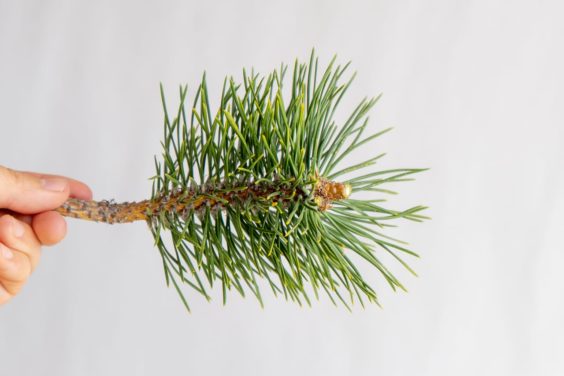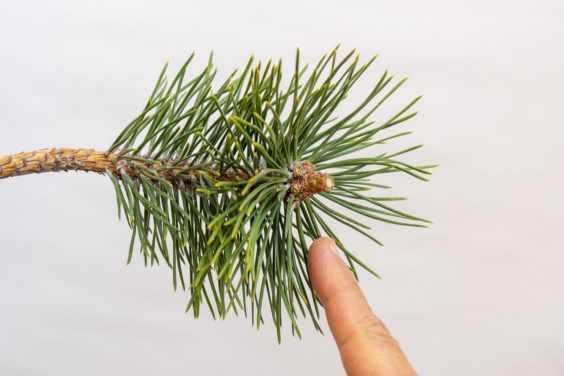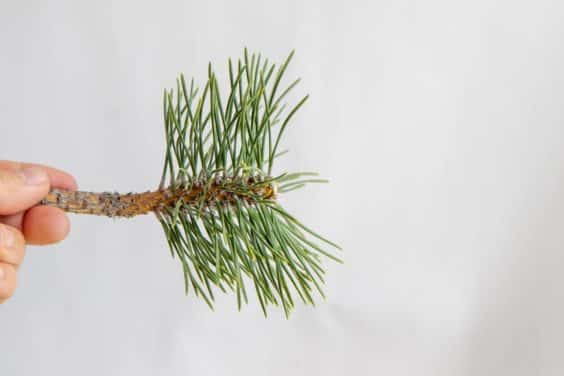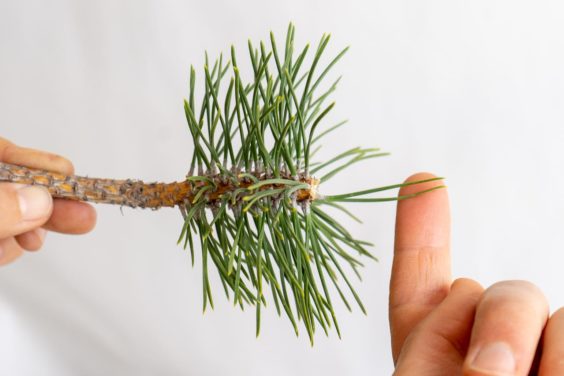Earlier this week, we looked at the three basic types of buds found on black pine bonsai. Here’s what we can do to stimulate each.
As terminal buds develop without prompting, we don’t need to do anything to encourage them. They’re the buds at the end of every living branch.
To demonstrate techniques for stimulating adventitious buds and needle buds, let’s look at the following sample branch.
Pine branch with two years of growth
When we decandle pines, we remove the current year’s growth as in the photo below.
After removing the current year’s growth
If we make this cut in the middle of the growing season, typically in June in the northern hemisphere, we can expect adventitious buds to appear from the stub we left behind.
Adventitious buds commonly develop from the stub
If we make this cut at other times of the year, there is a chance adventitious or needle buds will develop, and there is a chance that the branch will die back. The closer we make the cut to the middle of the growing season, the better the odds the tree will develop adventitious buds.
A related technique involves cutting past the spot where we decandle pines. If we cut back to a spot where the previous year’s needles are growing, we can stimulate needle buds. The closer we make the cut to the middle of the growing season, the better the odds the tree will develop needle buds.
Cutting into the previous year’s needles, aka tochuu-kiri
A needle bud may develop between these needles
We can now make the following observations:
- If we want the tree to grow as fast as possible, we can skip decandling to avoid slowing the tree down.
- If we want greater branch division in a relatively healthy pine, we can decandle to stimulate adventitious buds.
- If we want to strongly reduce a branch’s vigor or shorten the gaps between branches, we can cut into the previous year’s needles at decandling time in an attempt to stimulate needle buds.
Here’s where some attention to details like timing come into play.
- Because decandling reduces vigor, we only want to decandle healthy pines that have been fertilized well. If we decandle at the right time for our climate, we can generally expect a second flush of growth to develop over summer.
- Because cutting into old needles can greatly reduce a branch’s vigor, the technique is used sparingly in mature specimens. The tree’s response to this technique (known as tochuu-kiri in Japanese) will depend greatly on the relative vigor of the branch that has been cut. Strong branches growing near the apex are much more likely to produce needle buds than weak branches in the tree’s interior.
The best way to develop a working knowledge of these techniques is to try them out on trees you don’t mind experimenting with. In the meantime, here are some related articles that describe these approaches to stimulating buds in black pine bonsai.
Related Posts
The post Stimulating back buds on Japanese black pine appeared first on Bonsai Tonight.





